Ancient Germanic Tribes.pptx
- Количество слайдов: 21
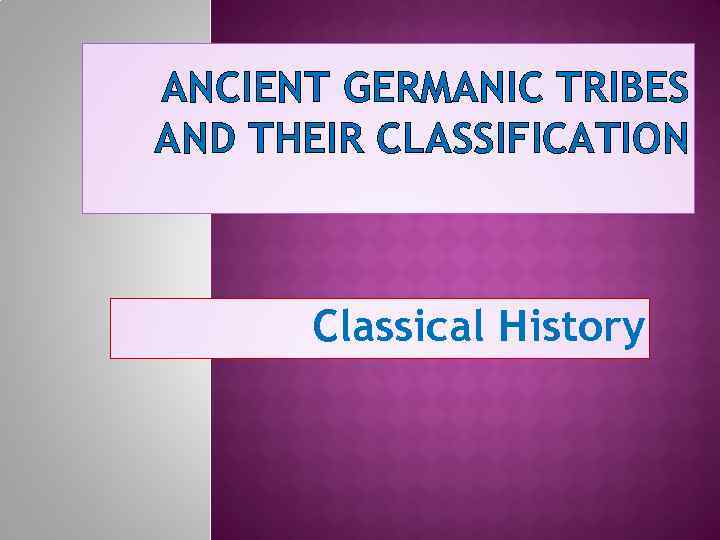
ANCIENT GERMANIC TRIBES AND THEIR CLASSIFICATION Classical History
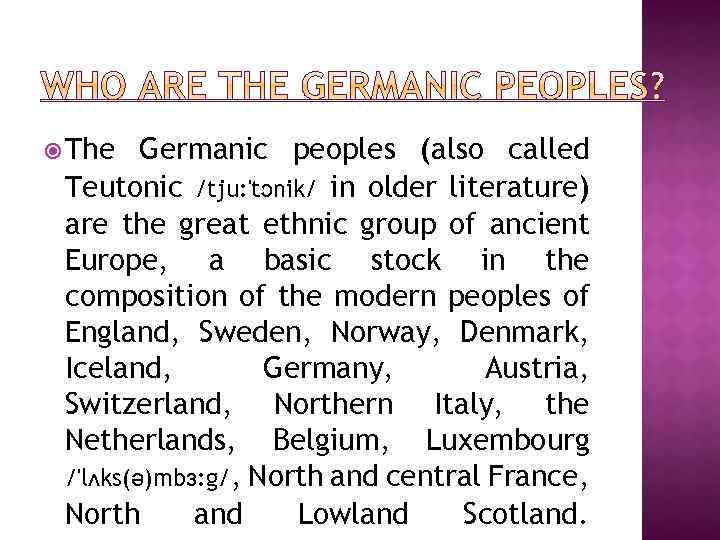
The Germanic peoples (also called Teutonic /tju: 'tɔnik/ in older literature) are the great ethnic group of ancient Europe, a basic stock in the composition of the modern peoples of England, Sweden, Norway, Denmark, Iceland, Germany, Austria, Switzerland, Northern Italy, the Netherlands, Belgium, Luxembourg /'lʌks(ә)mbɜ: g/, North and central France, North and Lowland Scotland.
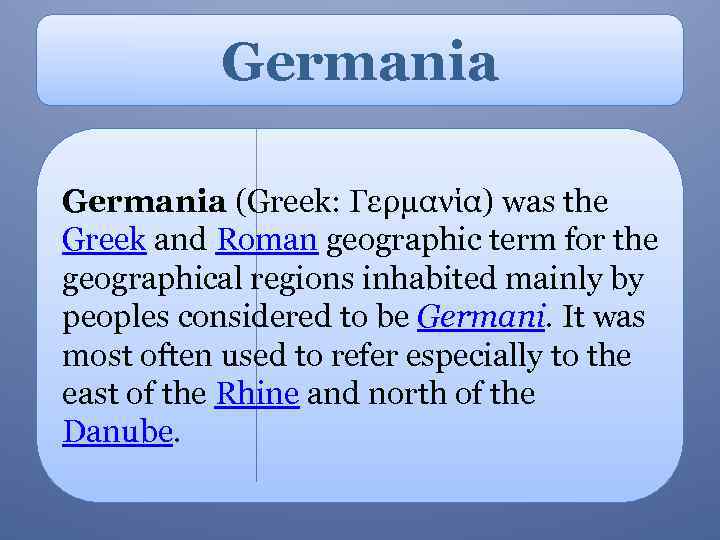
Germania (Greek: Γερμανία) was the Greek and Roman geographic term for the geographical regions inhabited mainly by peoples considered to be Germani. It was most often used to refer especially to the east of the Rhine and north of the Danube.
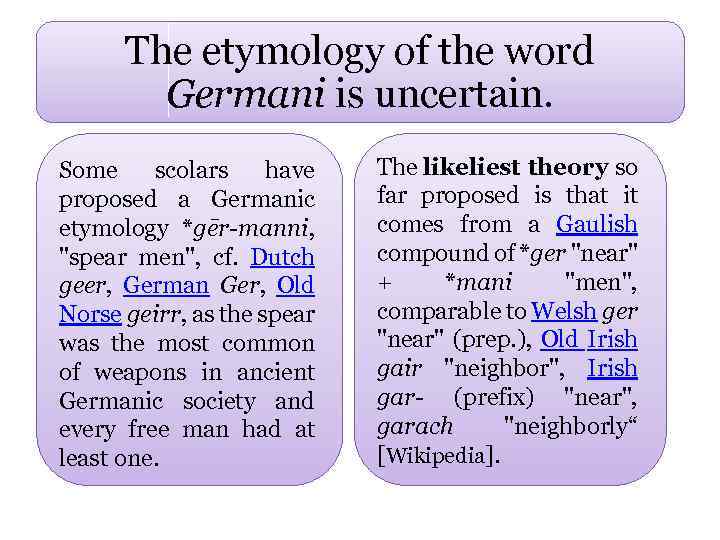
The etymology of the word Germani is uncertain. Some scolars have proposed a Germanic etymology *gēr-manni, "spear men", cf. Dutch geer, German Ger, Old Norse geirr, as the spear was the most common of weapons in ancient Germanic society and every free man had at least one. The likeliest theory so far proposed is that it comes from a Gaulish compound of *ger "near" + *mani "men", comparable to Welsh ger "near" (prep. ), Old Irish gair "neighbor", Irish gar- (prefix) "near", garach "neighborly“ [Wikipedia].
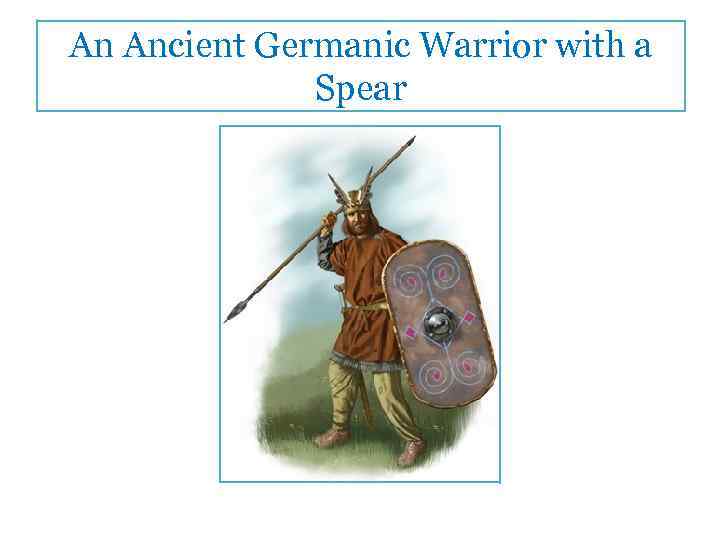
An Ancient Germanic Warrior with a Spear
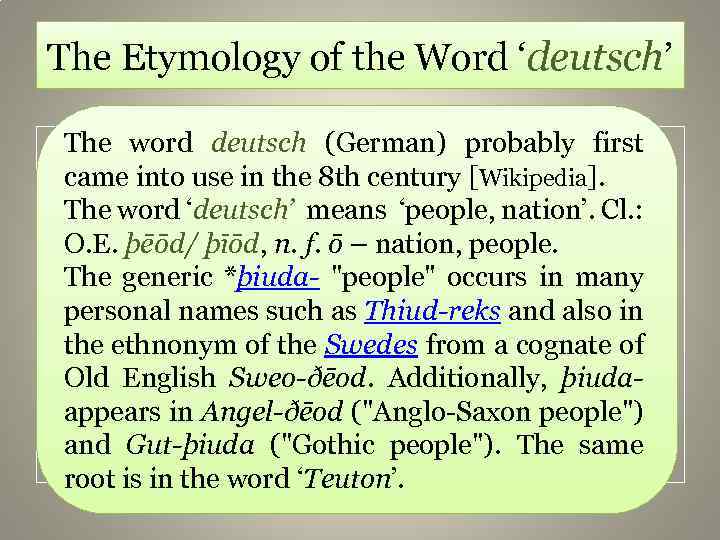
The Etymology of the Word ‘deutsch’ The word deutsch (German) probably first came into use in the 8 th century [Wikipedia]. The word ‘deutsch’ means ‘people, nation’. Cl. : O. E. þēōd/ þīōd, n. f. ō – nation, people. The generic *þiuda- "people" occurs in many personal names such as Thiud-reks and also in the ethnonym of the Swedes from a cognate of Old English Sweo-ðēod. Additionally, þiudaappears in Angel-ðēod ("Anglo-Saxon people") and Gut-þiuda ("Gothic people"). The same root is in the word ‘Teuton’.
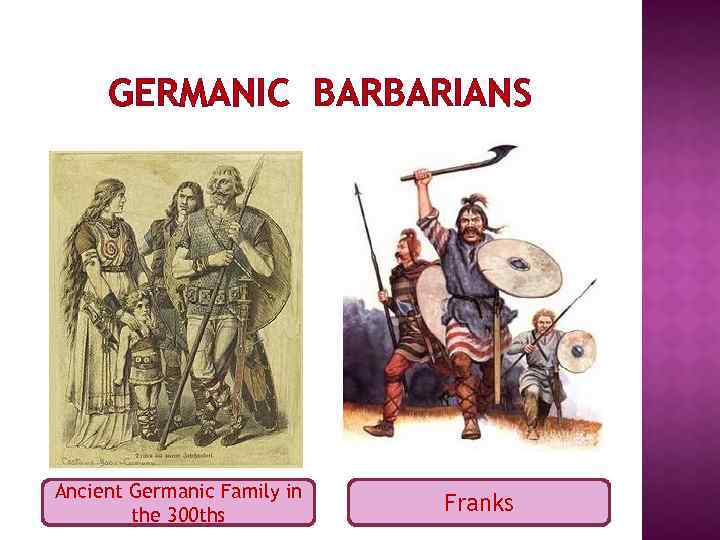
GERMANIC BARBARIANS Ancient Germanic Family in the 300 ths Franks
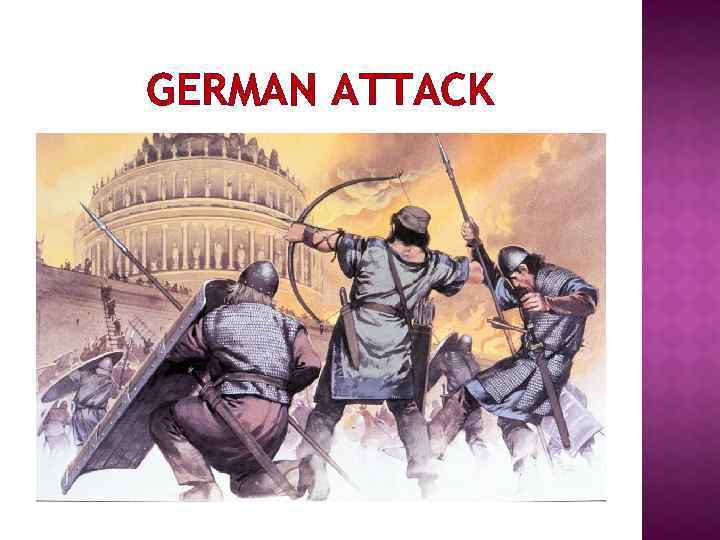
GERMAN ATTACK
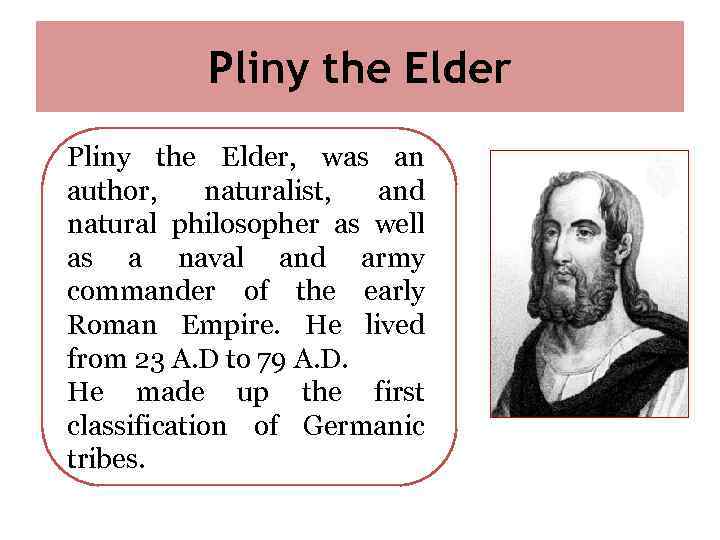
Pliny the Elder, was an author, naturalist, and natural philosopher as well as a naval and army commander of the early Roman Empire. He lived from 23 A. D to 79 A. D. He made up the first classification of Germanic tribes.
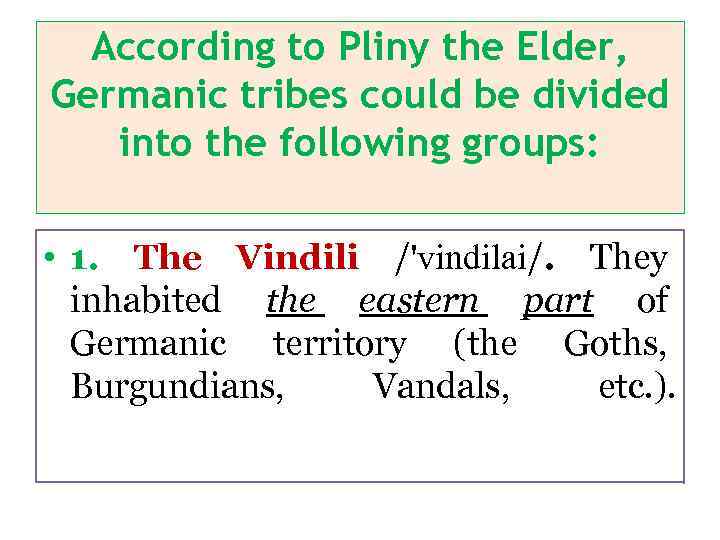
According to Pliny the Elder, Germanic tribes could be divided into the following groups: • 1. The Vindili /'vindilai/. They inhabited the eastern part of Germanic territory (the Goths, Burgundians, Vandals, etc. ).
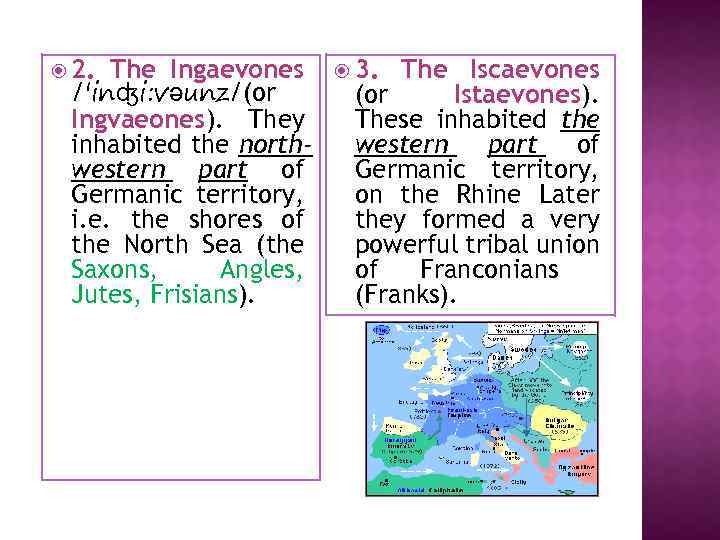
2. The Ingaevones /'inʤi: vәunz/(or Ingvaeones). They inhabited the northwestern part of Germanic territory, i. e. the shores of the North Sea (the Saxons, Angles, Jutes, Frisians). 3. The Iscaevones (or Istaevones). These inhabited the western part of Germanic territory, on the Rhine Later they formed a very powerful tribal union of Franconians (Franks).
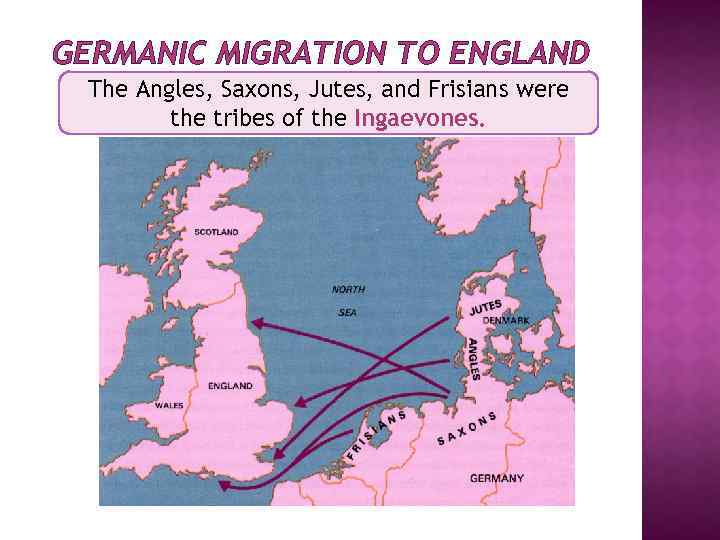
GERMANIC MIGRATION TO ENGLAND The Angles, Saxons, Jutes, and Frisians were the tribes of the Ingaevones.

4. The Hermiones (or Herminones). These inhabited the southern part of Germanic territory, i. e. what is now Southern Germany (the Alemans, Bavarians, Thuringians, etc. ). Thuringia, Bavaria are the federal lands of the present-day Germany. The Bavarian Alps Erfurt, the centre of Thuringia
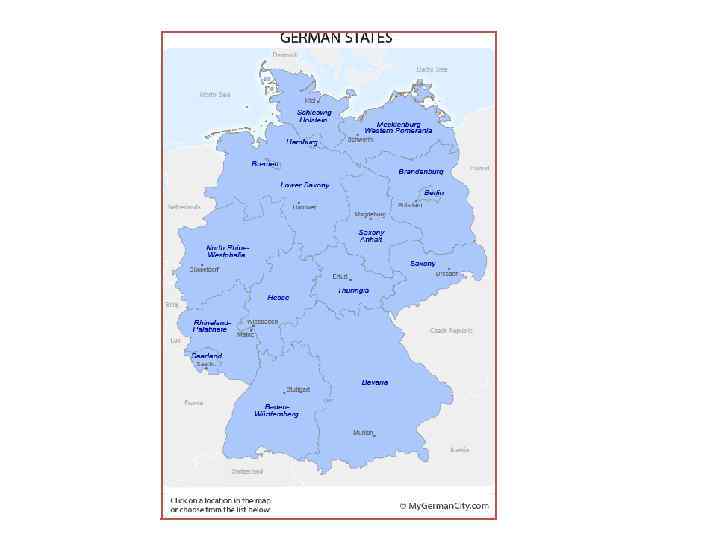
![• 5. The Peucini and Bastarni. These lived close to Dacia ['deiʃә/ 'deisiә], • 5. The Peucini and Bastarni. These lived close to Dacia ['deiʃә/ 'deisiә],](https://present5.com/presentation/1/185298463_458416927.pdf-img/185298463_458416927.pdf-15.jpg)
• 5. The Peucini and Bastarni. These lived close to Dacia ['deiʃә/ 'deisiә], i. e. close to what is now Rumania.

The Hilleviones, who inhabited 6. The Hilleviones, who Scandinavia. In the 19 th century linguists accepted Pliny’s classification. But Group 5 was excluded.
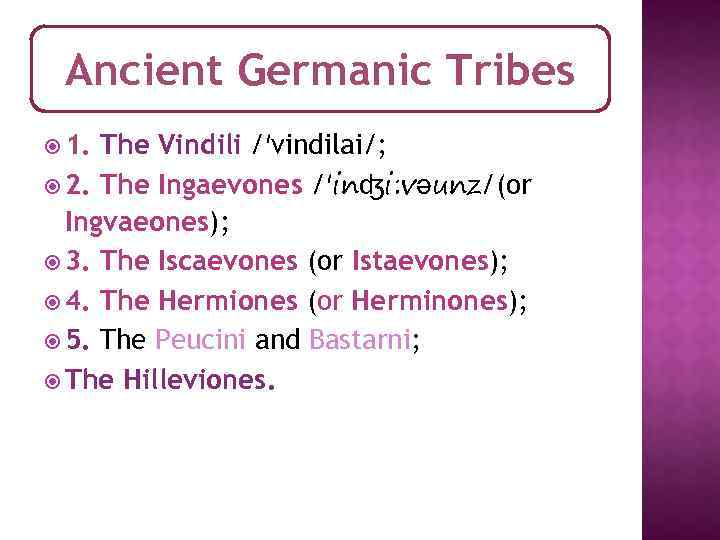
Ancient Germanic Tribes 1. The Vindili /'vindilai/; 2. The Ingaevones /'inʤi: vәunz/(or Ingvaeones); 3. The Iscaevones (or Istaevones); 4. The Hermiones (or Herminones); 5. The Peucini and Bastarni; The Hilleviones.

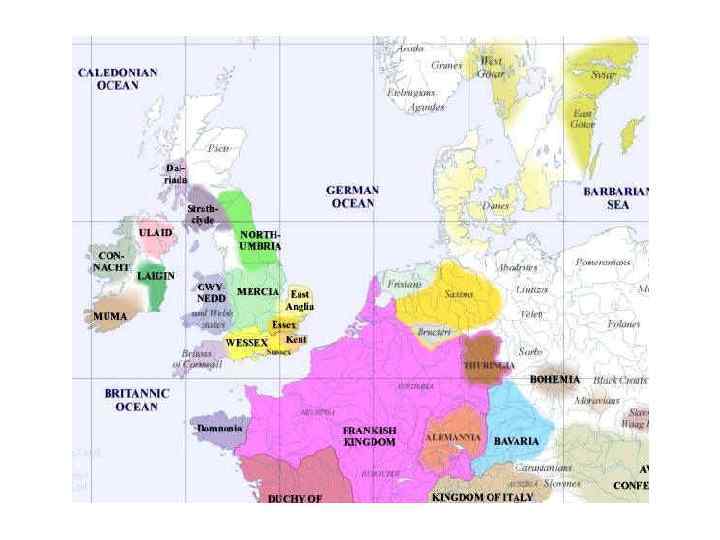
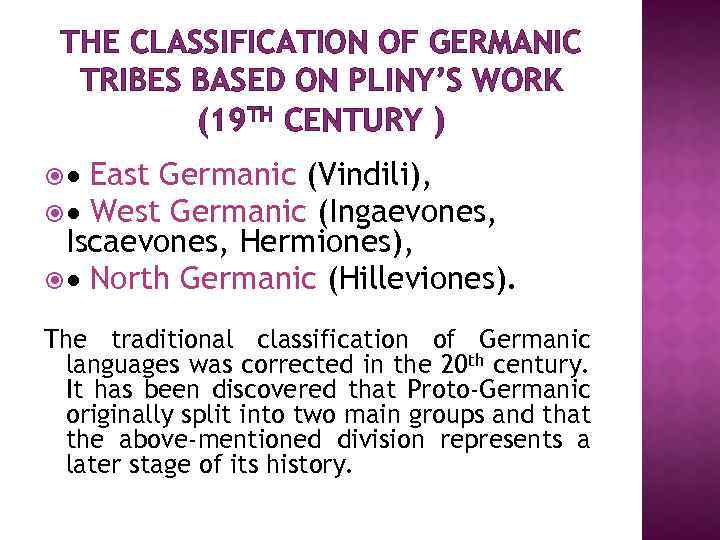
THE CLASSIFICATION OF GERMANIC TRIBES BASED ON PLINY’S WORK (19 TH CENTURY ) East Germanic (Vindili), West Germanic (Ingaevones, Iscaevones, Hermiones), North Germanic (Hilleviones). The traditional classification of Germanic languages was corrected in the 20 th century. It has been discovered that Proto-Germanic originally split into two main groups and that the above-mentioned division represents a later stage of its history.

Ancient Germanic Tribes.pptx